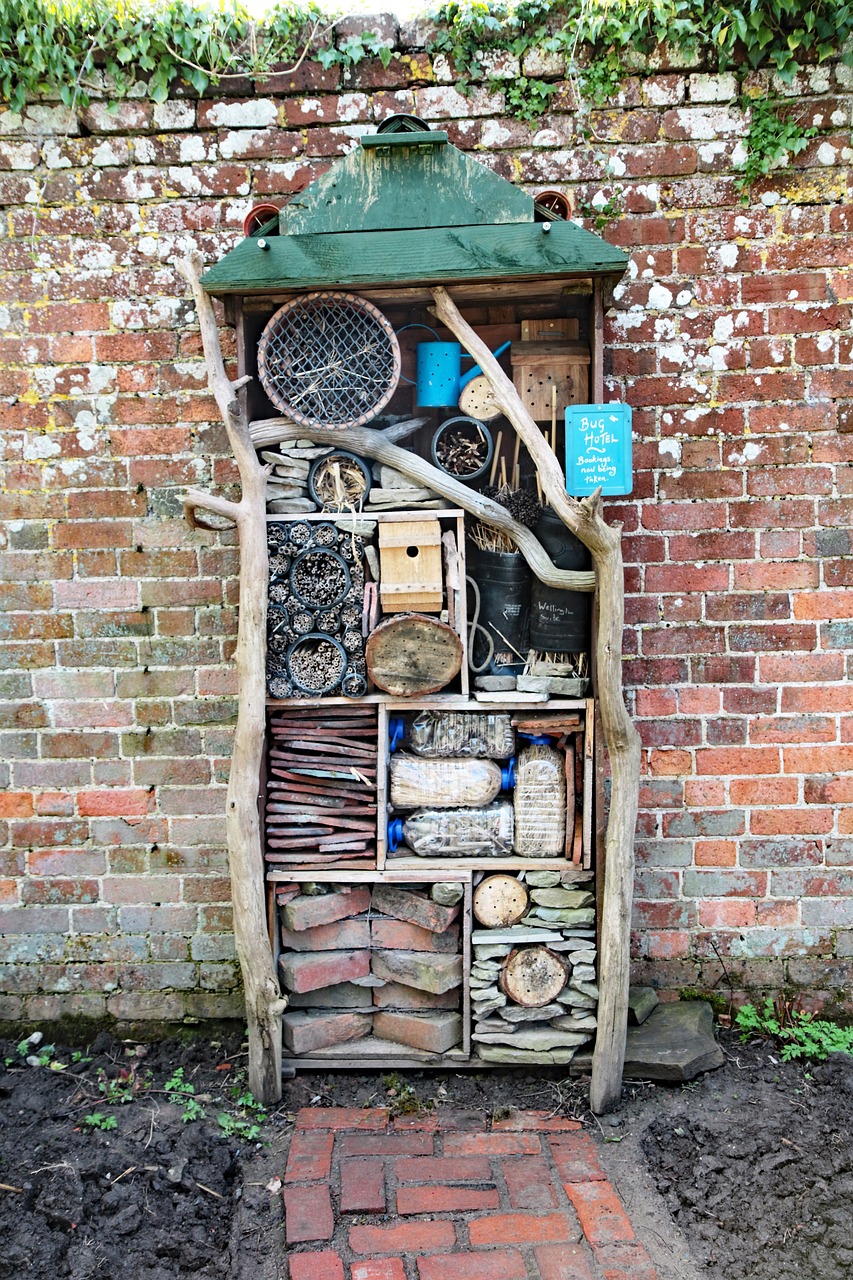How to attract wildlife to your garden..
It doesn’t matter how large or small, your outside space is not only a haven for you and your family, but for our native wildlife too. This is true whether you have a balcony or an expanse of lawn with packed flower borders, although we admit you’re unlikely to find many hedgehogs wandering onto a balcony…
Wildlife is under stress, from environmental damage, destruction of habitat and climate change, and while each of us might be able to do little about that, we can provide safe haven for British wildlife in our own gardens.
Your first question might be why – why do we need wildlife? In short, it’s because they’re useful, on the whole. Insects pollinate plants (imagine a world with no fruit, no wine, no chocolate, no beer!), spiders eat insects, birds eat spiders and fill our gardens with song, and while this is a super-simplistic summary, it’s really a whole circular economy of natural wonders – or it was until we stuck ourselves in the middle of it.
Your second question might be what – what wildlife are we talking about here? In British back gardens we’re talking birds, bees, butterflies, bats and, if we’re lucky, hedgehogs.
So, where do we start? In the same place you start when creating a home for you and your loved ones, by creating a safe environment with food and shelter.
Here are four ways to encourage wildlife into your garden
- Create a dedicated ‘wild zone’
We’re not suggestion you let your garden run wild as you give it over to nature – your family or your neighbours wouldn’t thank you – but perhaps find a small corner, or redesign a single border (or if we’re talking balcony, adapt a few pots) where you can grow native wildflowers our bees and butterflies love. It can look really pretty too, with foxgloves, chamomile, lavender, cornflowers and borage being designed by nature to provide accessible nectar to pollinating insects. Consider being a little more relaxed in the mowing of your lawn, too, or even just a portion of it. A heavily clipped lawn isn’t very wildlife friendly, so mow less often, or keep a small patch uncut. If you can, don’t add chemical fertilisers or weed killers – these destroy biodiversity. Be brave and let the daisies, clover and buttercups grow through (though we will allow that thistles need uprooting!). Don’t think of them as weeds, but as food and shelter and a breeding ground for insects that in turn provide food for birds and hedgehogs.
- Do some planting
Last winter, with the big chill we experienced before Christmas, many gardens lost plants that aren’t as well designed for British weather as our native plants are. Have a think about whether you can add in any native shrubs or trees that not only fill a space, providing colour and texture and interest, but will also support our native wildlife. So, that’s a no to bamboo (not so many pandas wandering around south Manchester) but a yes to silver birch (you can get dwarf and ornamental varieties, wild cherry, crab apple (these look fabulous when they flower and fruit) or copper beech, which makes for fabulous hedging. For smaller spaces, consider dogwood (again, amazing autumn colour) or Butcher’s Broom.
- Set up a bird bath
Most homes don’t have garden ponds these days, so if you have space for a birdbath, that would not only give birds somewhere to have a drink and a wash (they’re so cute when having a bath) but you’ll spot bees and other insects skimming the water, too. A low set bird bath, just a shallow bowl on the ground, will also provide drinking water for hedgehogs.
- Give wildlife a home
Bird boxes, bat boxes, bug hotels, bee bricks – there are so many ready-made options available you just need to choose what you want and where you will put it. Making your own bug hotel is a fun weekend activity to undertake with your children, too. You just need a pallet, some bricks, twigs and lengths of bamboo cut to reveal the hollow ends. First, cut your pallet in half to make two rectangular pallets (or if you have space, don’t, and get an extra pallet) Place bricks on the ground and place the pallet on top.
Then arrange piles of twigs, a brick or two, some thicker logs and your bamboo all facing outwards to allow the solitary beads, lacewings and many,many other minibeasts to find a home. Or, if you’re a bit of a dab hand at DIY, get creative and build something a little more stylish!
As far as bird boxes are concerned, the RSPB says for blue tits and sparrows, choose a classic style bird box, with an entry hole near the top below a sloping roof. For smaller birds such as blue tits, place the box in a tree or on a wall about two to four metres high, and make sure it faces north or east. Sparrows are a social little bird, so mounting three or four boxes in a row (terraces for sparrows, we love!) can attract them in. Make sure the entry hole is 32mm.
If you want to attract robins, their birdbox of choice is the open-fronted variety. Robins like the box to be placed under two metres high, and in a heavily protected area with plenty of shrubs and planting.
Finally – why not build a hedgehog house? You can buy these ready made, or Google for instructions. Hedgehogs really need our help at the moment. Forty years ago you’d see them all the time but now it feels like a real treat. Part of this is due to our habit of fencing in our gardens, which means they can’t spend their night eating slugs and snails from a large territory. If your garden is all fenced off, could you create a gap at the base of the fence on two sides of the garden, and encourage your neighbours to do the same? And if you are lucky enough to spit one of these little prickly mammals snuffling about your garden, don’t feed with with bread and milk, this will kill it. If you want to feed it (and in the later months of summer this is actually a good idea) give it cat meat or dog meat only.
Eddie – Friday 28th July 2023 – (Image of bug hotel).



